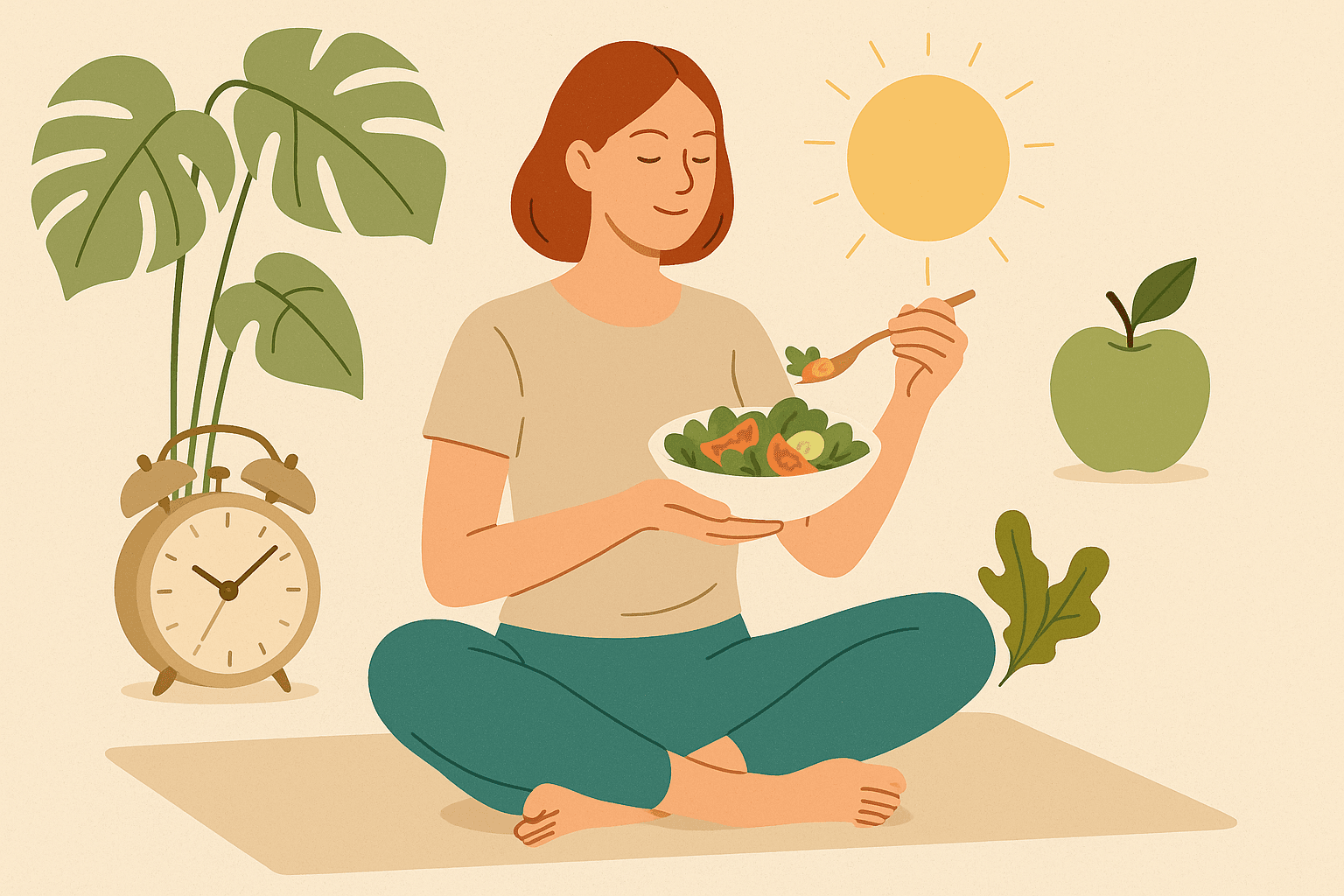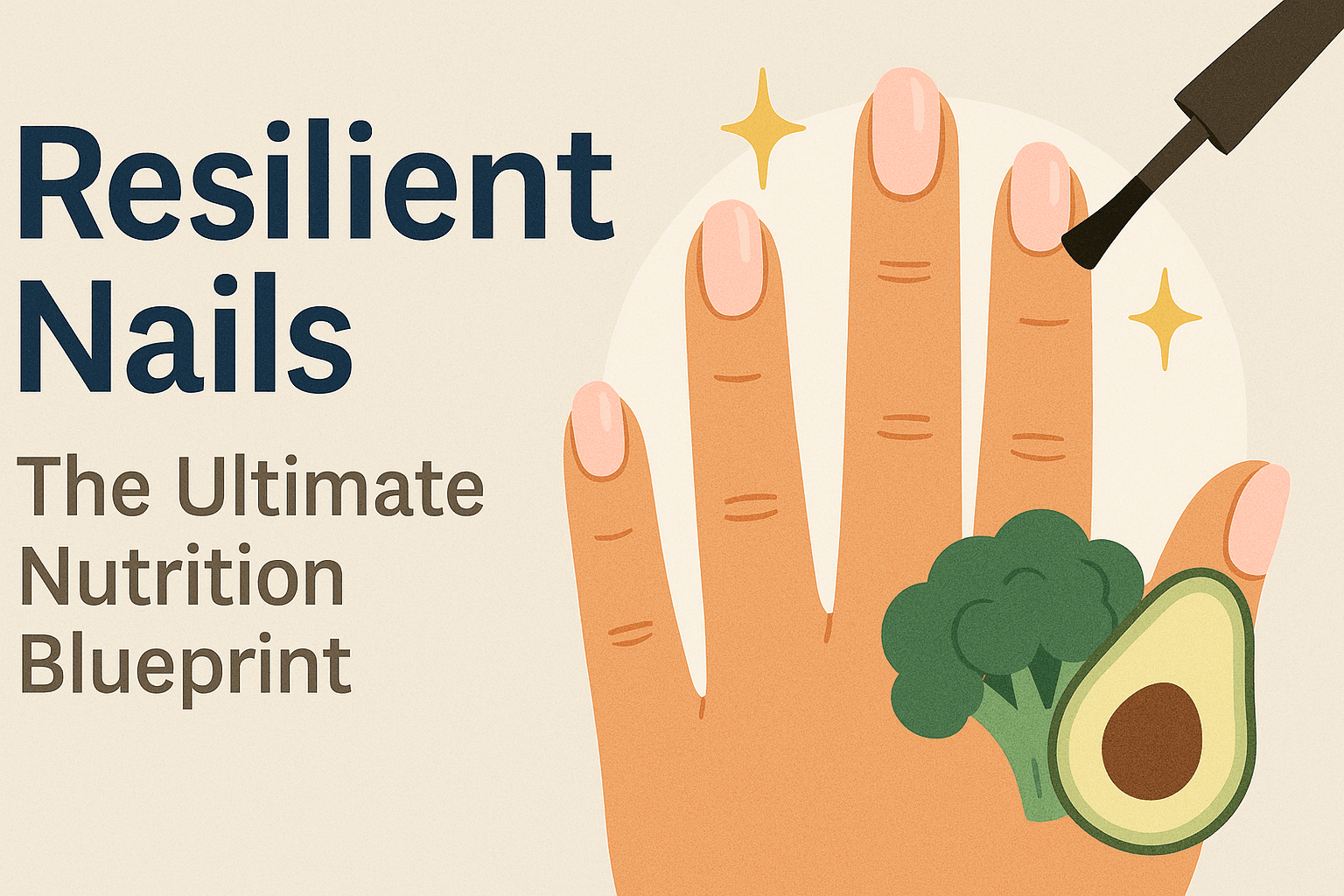The Healthy Lifestyle Blueprint: How to Eat, Move, Sleep, and Live With Energy and Ease
Published on May 27, 2025

Sound living isn’t about pursuing extremes; it’s about building the basics. Every bite, step, breath and night of sleep you get is a vote for your future self.
It’s not about perfection. It’s about rhythm. Not about willpower, but habits that conserve energy and focus. It’s about creating a life that feeds you again — physically, mentally, emotionally.
This is your comprehensive, science-backed, real life-tested guide to a lifestyle you can actually stick with. One that supports your metabolism, your brain, your hormones, your joy.
We’re going to distill it into four mighty pillars: NourishmentMovementRecoveryEmotional alignment
And for each, you’ll get: The what (the science that counts) The how (practical steps you can take today) The why it matters (so you keep going when motivation fades)
Food That Actually Fuels You
Let me be clear: food isn’t merely fuel. It’s information. It tells your body what kind of place it’s in — stressed or safe, inflamed or healing, full of energy or running on empty.
A healthy approach to food is not one of constraints. It’s strategic and generous.
The science: Protein – for muscle, hormones and neurotransmitters Fiber – for gut microbiota and blood sugar balance Good fats – to reduce inflammation and feed the brain Micronutrients – from plants, spices, fish, and organ meats for cellular repair
Daily practice:
Protein: 25–35g per meal
Non-Starchy Vegetables: 3–6 cups/day (mix raw and cooked)
Healthy fats: 1–2 tbsp per meal (olive oil, avocado, tahini, nuts)
Whole carbs: ½ cup per meal (quinoa, lentils, sweet potato, berries)
Meal patterns that work:
Time-restricted eating (10–12 hour window)
No snacking between meals
80% home-prepared food for more control and fewer inflammatory triggers
Movement That Rebuilds Instead Of Breaks Down
You don’t need to go hard to be healthy. Movement supports metabolism, clarity, longevity.
The science:
Exercise improves insulin sensitivity, sleep, digestion and brain function
Resistance training protects lean muscle and metabolic rate
Daily walking improves lymph flow, joint mobility and parasympathetic tone
Weekly rhythm:
Strength workouts: 2–4x/week
Walking: 5,000–10,000+ steps/day
Mobility or yoga: 10 minutes/day
Cardio bursts or HIIT: 1–2x/week (only as tolerated)
Daily activation ideas:
Walk after meals
5–10 min stretchy morning flow
1-minute microbreaks hourly (squats, pushups, stretches)
Move to energize, not punish. Move to nourish, not burn out.
Restorative Recovery That Repairs and Rebuilds
It’s not effort that makes you stronger — it’s recovery. Sleep is your hormone reset button. Silence is anti-inflammatory. Stillness is medicine.
When you rest well:
Growth hormone supports repair
Insulin sensitivity improves
Cortisol drops, inflammation subsides
Brain detoxes via the glymphatic system
Sleep strategies:
Same bedtime 6–7 nights/week
Last meal 2–3 hours before bed
No caffeine after noon
Supplements: magnesium glycinate, glycine, lemon balm, tart cherry
Recovery habits:
10 minutes of breathwork or nature daily
Epsom salt bath or sauna 1–2x/week
One screen-free night/week
No screens 1 hour before bed
Emotional Alignment and Nervous System Coherence
Your nervous system links thoughts, habits, biology. Chronic stress disrupts digestion, energy, cravings and recovery.
Daily calm rituals:
Morning sun within 30 minutes of waking
Movement before screens
Routines: walk, tea, journaling, prayer
4–7–8 or box breathing
5–10 min silence or meditation
Repeat: I eat/move/live in a way that supports me
Reconnect to purpose:
Who are you becoming?
What does your body need to show up like that?
Which habits align you?
The Lifestyle That Lasts
Not hacks. Rhythm.
Not motivation. Identity.
Not short-term. Long-view.
How you feel in your body, your mind, your life — every single day.
Start simple. Build slow. Stack habits that protect your energy.
Because the lifestyle that sticks is honest. Intentional. Real.
Live like your future self is watching — because they are.








